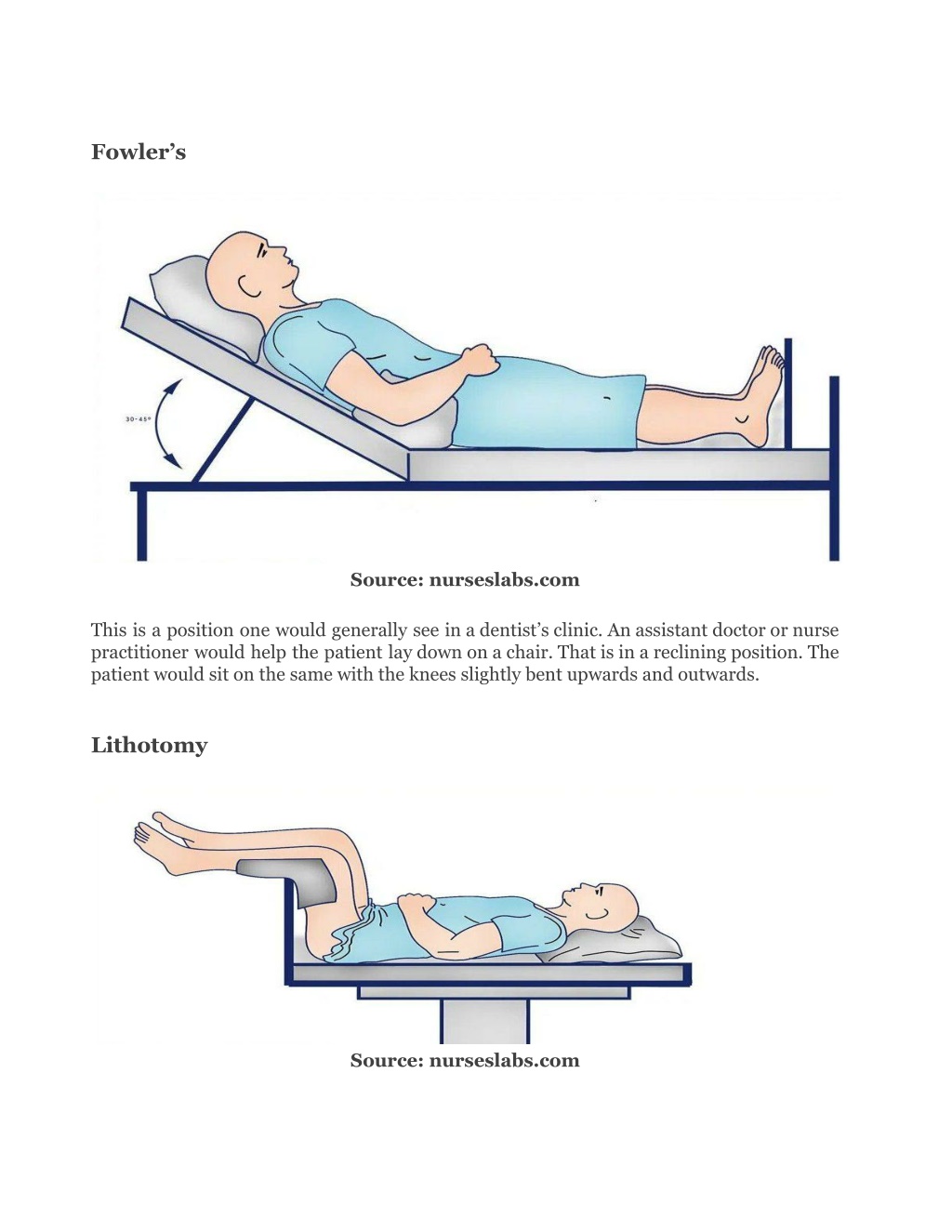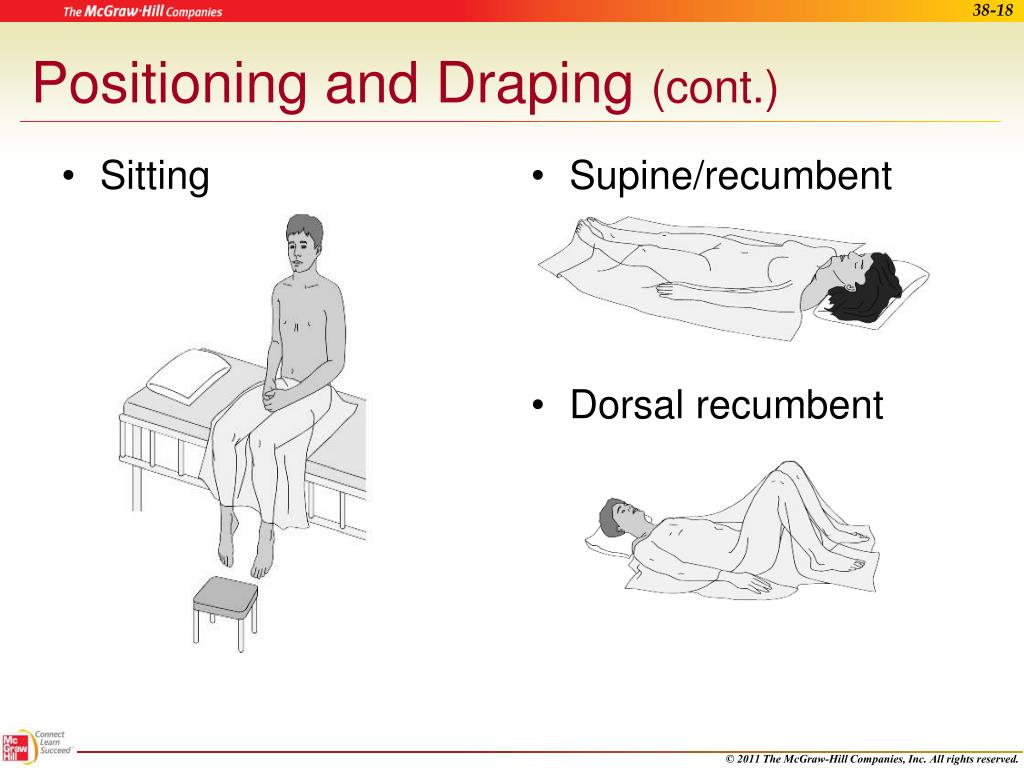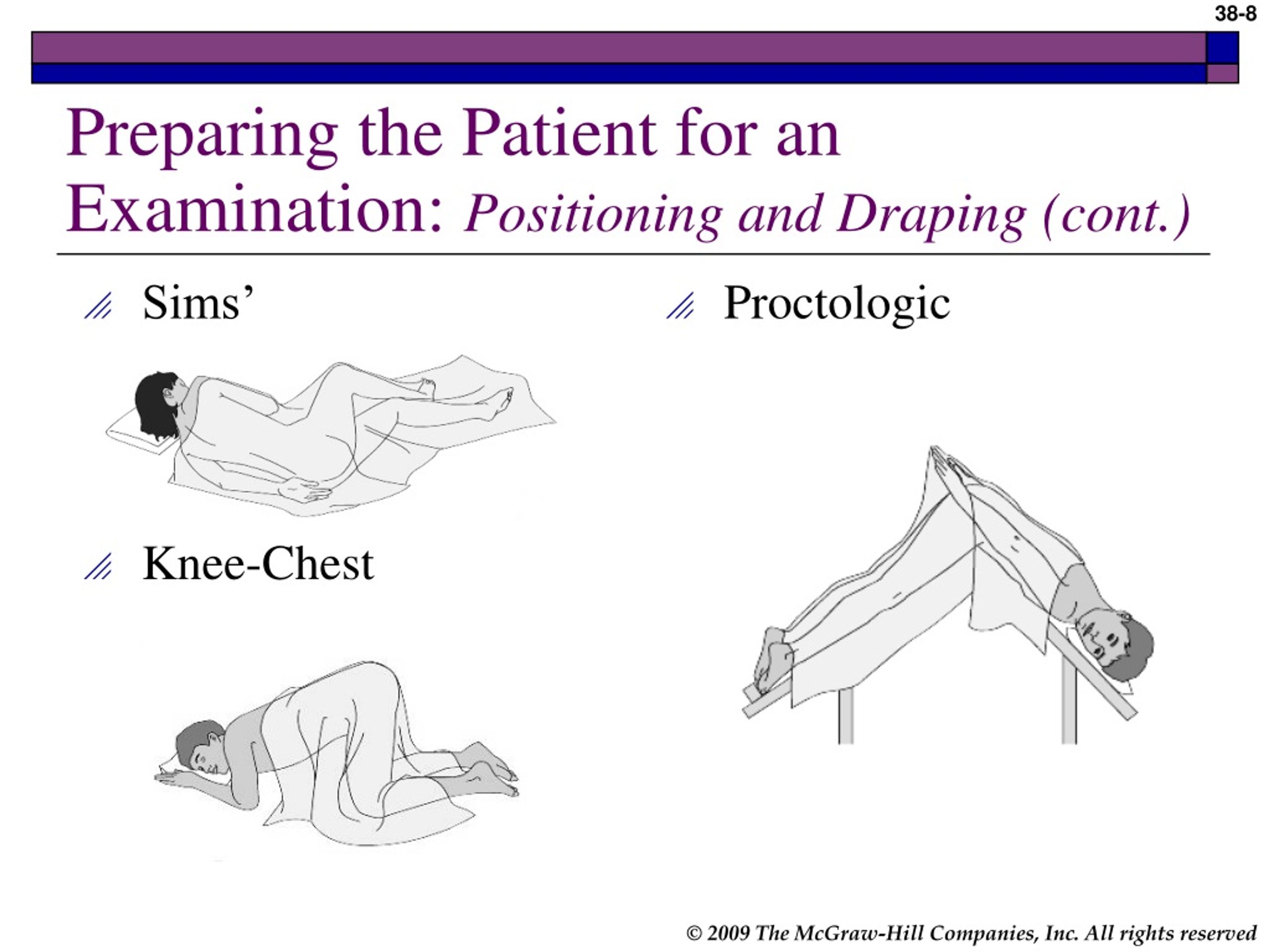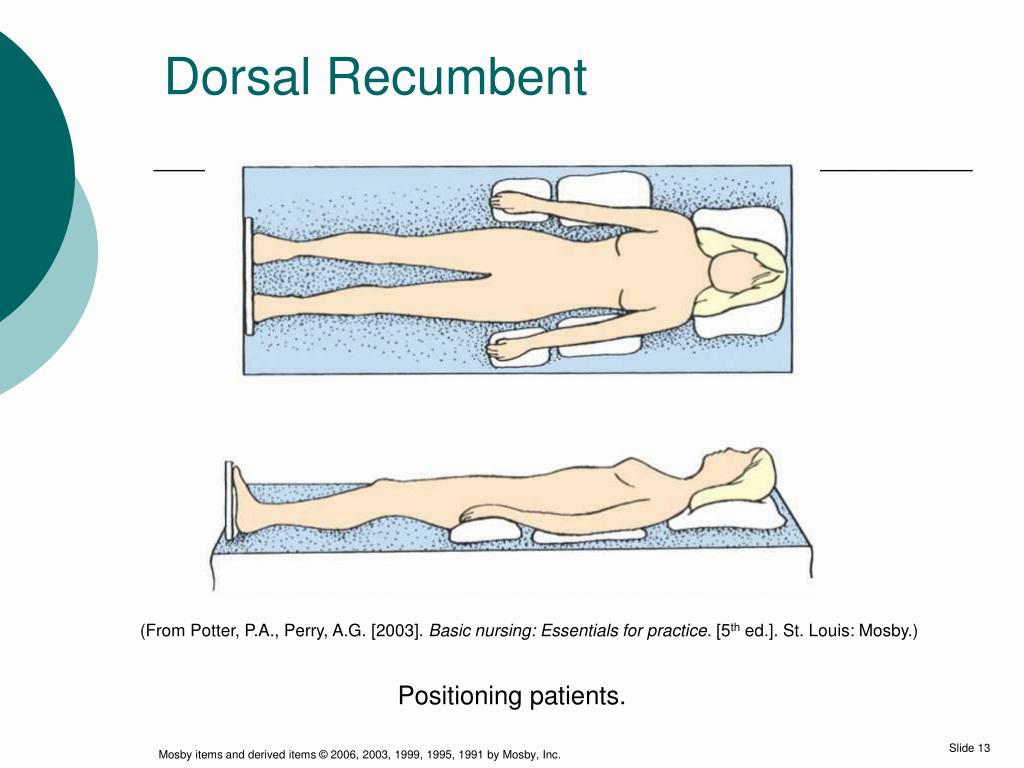
Recumbent Position What Is It, Variations, and More Osmosis
Supine or Dorsal Recumbent Position Fowler's Position Orthopneic or Tripod Position Prone Position Lateral Position Sims' Position Lithotomy Position Trendelenburg's Position Reverse Trendelenburg's Position Knee-Chest Position Jackknife Position Kidney Position Support Devices for Patient Positioning Documenting Patient Positioning

Patient Positioning (Sims, Orthopneic, Dorsal Recumbent) Guide [2020]
What is the Dorsal Recumbent Position? This is a position where the patient lies flat on their back and is asked to flex their hip and knee joints moderately while spreading them slightly outwards. In this position, the physician or the midwife can view the entire perineum during delivery, repair operations, and conduct vaginal examinations.
:max_bytes(150000):strip_icc()/ll_recumbent-5bb0ed7c46e0fb0026d9055d.jpg)
Anatomical Position Definitions and Illustrations
The recumbent position describes the body 's position when it is lying horizontally, such as when sleeping. Variations of the recumbent position include the supine position, where a person lies flat on their back with their face and abdomen facing upwards, and the prone position, where the person lies on their abdomen with their face down.

PPT Dorsal Recumbent Position_ A Guide to Patient Positioning PowerPoint Presentation ID
Recumbent position: lying down in any position; a.k.a. decubitus position Semi-prone position: lying on side between a lateral and prone position with the upper knee drawn up toward the chest and the lower arm drawn behind parallel to the back. "Right" or "left" precedes the term to indicate the patient's right or left side.

Different Positionings 1. Supine Position / Dorsal / Horizontal Recumbent Patient lies Flat
What is Patient Positioning? Patient positioning refers to the techniques nurses use with their patients to maintain a neutral body alignment. Proper patient positions help to: Protect the patient from potential problems related to immobility and injuries. Promote the overall health of the patient.

Different Patient Positioning Different Positionings Supine Position /Dorsal/Horizontal
The dorsal recumbent position is a common position used in medical procedures such as pelvic exams and catheterizations. It is a supine position where the patient lies on their back with their knees bent and their feet flat on the bed or exam table.

PPT Client’s positions PowerPoint Presentation, free download ID2561698
The supine position, also known as the dorsal decubitus position, refers to one of the ways an individual can lie on a table during a surgical procedure or a physical exam. In the supine position, the individual is lying on their back, with their face and abdomen facing upwards.

Pin by jeremiah valdivia on Quick Saves Medical surgical nursing, Nursing math, Nursing school
The dorsal recumbent position is a reclining position in which the patient's both knees flexed, hips rotated outward, and both soles kept flat on the bed. It is one of the most commonly used dorsal or supine positions in clinical practice. Also, the dorsal recumbent position is often used synonymously with the supine position.

Pin on Quick Saves
While it's similar to the prone position, the key difference is that the knees are BENT, hence the name dorsal recumBENT. Think of the name of the position to remember it better - dorsal means "the back", like the dorsal fin on a dolphin, and recumbent means "lying down".

PPT Assisting with a General Physical Examination PowerPoint Presentation ID6588671
Dorsal Recumbent Position. The purpose of the dorsal recumbent position is to allow for examination of the head, neck, anterior thorax, lungs, breasts, axillae and heart. Review the resident's care plan to assess for any special needs of the resident. Wash and dry your hands thoroughly before beginning the procedure.
/positions-5bb0f1d74cedfd002615d0ca.png)
What Is The Meaning Of Recumbent Position slidesharedocs
The dorsal recumbent position involves a person lying on their back with their knees bent up in an outward position. The person will lie on the ground, bed, table, or resting platform while resting in this position. It allows medical professionals to examine and observe the pelvic area easily.

PPT Dorsal Recumbent Position A Guide to Patient Positioning PowerPoint Presentation ID
As opposed dorsal recumbent position, where the legs are bent and knees pointed straight up in the air with feet flat on the bed. A pillow can be put under the head to elevate the neck. The is used to examine different parts of body. This position allows the thoracic, peritoneal, and pericardial regions of the body.
:max_bytes(150000):strip_icc()/rl_recumbent-5bb0ed4c46e0fb0026ce0f9e.jpg)
Dorsal recumbent position kurtthought
In a dorsal recumbent position, a patient is lying on their back with their face towards the ceiling. The legs are often bent and rotated laterally. Having a patient's leg elevated with their.

Patient positioning Dorsal Recumbent and Lithotomy Nurse study notes, Nursing school
1. a bodily posture or attitude. 2. the relationship of a given point on the presenting part of the fetus to a designated point of the maternal pelvis; see accompanying table. See also presentation. Common examination positions. From Lammon et al., 1995.

PPT Purpose of General Physical Examination PowerPoint Presentation, free download ID976807
The dorsal recumbent position provides the best access to the pelvic area, that's why it's commonly used for gynecological, colorectal, genitourinary, and other procedures.

Why Do We Use Dorsal Recumbent Position? H.O.M.E.
The dorsal recumbent position is a position that is mostly used when it comes to positions for physical examination, especially in women. In this position, patients are asked to lie on their back, fully flexed their knees and their thighs. The feet are also rotated flat externally on the bed.